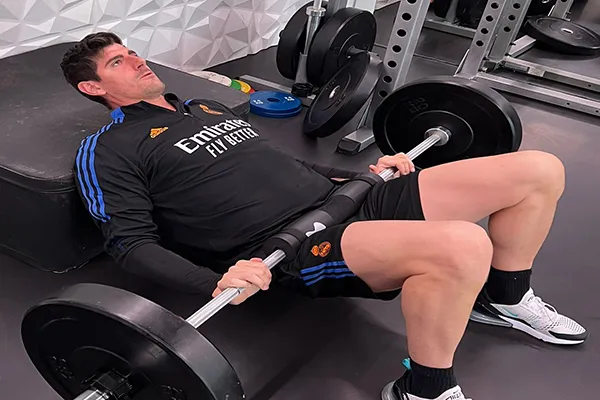
Weight room and goalkeeping
How Should a Goalkeeper Train in the Weight Room?
One of the most common questions in goalkeeping is: How should a goalkeeper work out? It’s no secret that goalkeepers train differently than field players, but does that difference extend to the weight room? The answer varies.
You don’t need to get overly creative in the weight room, trying to develop goalkeeper-specific skills through complex, unconventional exercises. Instead, the focus should be on improving key athletic attributes such as explosiveness, coordination, strength, and injury prevention.
I have always believed that if you want to be good at something, you need to practice it directly. That means the weight room should complement your training, but the real improvement happens on the field. This is why it’s crucial to dedicate time outside of the pitch to coordination, strength, and mobility training. You don’t want to waste valuable field time on activities that could have been done in the gym or elsewhere.
Strength Training for Goalkeepers: The Right Approach
Goalkeepers are athletes, not bodybuilders. Early in my career, I made the mistake of lifting like a bodybuilder rather than prioritizing athletic performance. That was a big mistake. Goalkeeping requires a combination of strength, power, agility, and flexibility, and your training should reflect that. A well-structured program will help you become more explosive while reducing the risk of injury.
Should a Goalkeeper’s Weight Training Be Different from a Field Player’s?
In general, weight training for goalkeepers doesn’t need to be drastically different from that of field players. Both require a foundation of compound exercises such as squats, deadlifts, and presses to build overall strength and power. However, there are some key differences goalkeepers can focus on:
Upper Body Strength: Goalkeepers rely more on their upper body, so they can benefit from additional upper body strength work, particularly for the shoulders, arms, and chest.
Plyometrics: Adding extra plyometric exercises can enhance explosiveness, which is crucial for quick dives, jumps, and lateral movements.
Mobility and Flexibility: A goalkeeper’s range of motion is essential for reaching difficult saves. Specific stretching routines and mobility work should be prioritized.
Injury Prevention: Goalkeepers are at higher risk for shoulder, wrist, and knee injuries, so incorporating prehab exercises can be highly beneficial.
Final Thoughts
Lifting is for lifting, and training is for training. You don’t need to be doing crazy dives with a medicine ball in the weight room to simulate goalkeeping. Instead, focus on a structured program that includes compound lifts, coordination drills, and proper stretching. The goal is to enhance your overall athletic ability while staying healthy and injury-free. The key to becoming a better goalkeeper is spending time on the field, refining your technique, and using the weight room as a tool to support that progress.